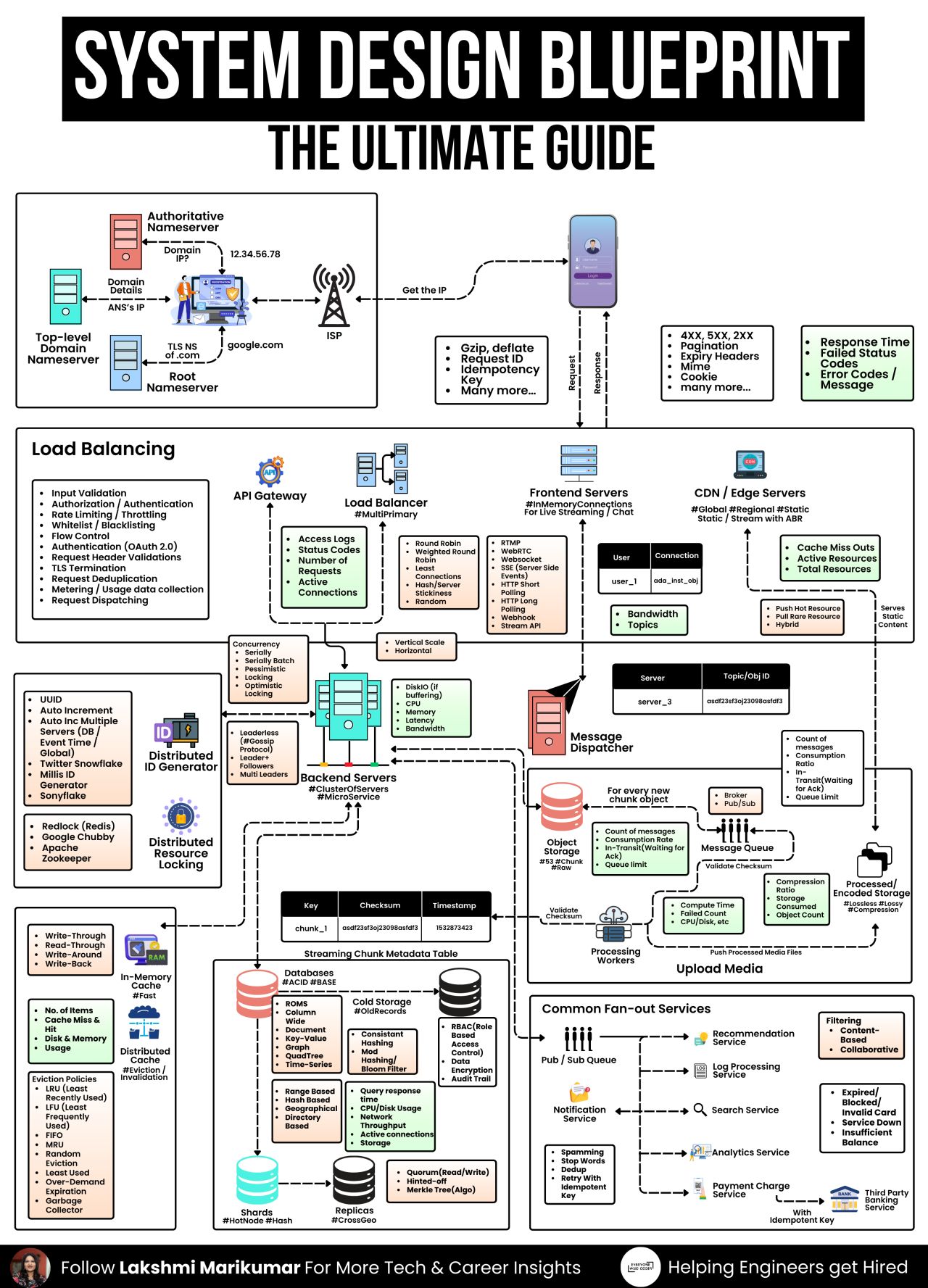System Design Interview Guide
Want to ace your System Design interview? Start with these 8 core concepts.
The ultimate guide – Struggling to connect all the dots in system design?
This blueprint simplifies the big picture – from DNS to storage, all in one view.
1. DNS resolution
Understand how domain names are resolved to IPs using top-level, root, and authoritative name servers.
2. Load balancing
Use Round Robin, Least Connections, or Consistent Hashing to distribute traffic. Pair with an API Gateway for smarter routing.
3. Frontend + CDN + API gateway
Handle high concurrency via WebSockets, HLS/RTMP, and edge servers with static/hybrid cache strategies.
4. Backend servers & Message queue
Microservices run in clusters, handling API calls, writing to queues, or streaming live media via Kafka or RabbitMQ.
5. ID Generation & resource locking
Use UUID, Snowflake, and Zookeeper to avoid duplicate writes and ensure event integrity in concurrent requests.
6. Storage: Databases, Object store, caches
Choose between SQL/NoSQL, hot/cold storage, and memory caching with Redis. Add checksum & chunk metadata for uploads.
7. Media upload & processing
Each uploaded chunk is dispatched, validated, compressed, and stored. Workers process and push to final storage/CDNs.
8. Fan-out Services
Send updates to recommendation systems, notification engines, search, analytics, or payment systems with retries and dedup.

🔁 Save this as your System Design reference sheet and share with someone preparing for system design interviews!
🏆 Our coached candidates have successfully landed offers at Google, Amazon, AWS, Oracle, FedEx, AMEX, startups and more!
Everyone Who Codes (EWC) has a simple mission: helping engineers get hired! 💼
Follow Lakshmi Marikumar for tech career & job search insights.
